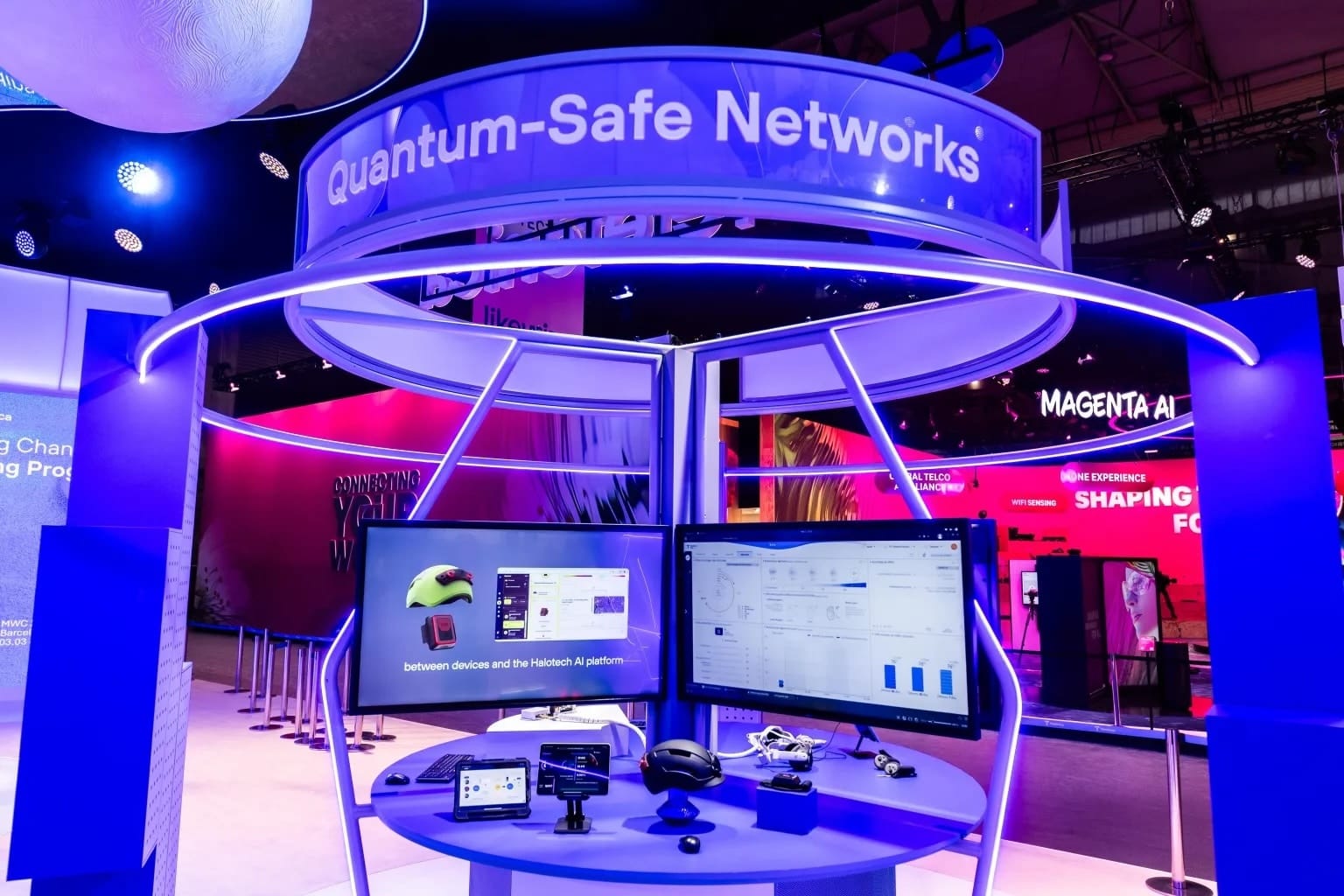The operator presents ‘Quantum-Safe Networks’, a proposal to protect communications in the era of quantum computing
Telefónica has unveiled its innovative demo Quantum-Safe Networks at the Mobile World Congress (MWC), a solution featuring three use cases aimed at strengthening communications and critical data against the challenges posed by quantum computing. This initiative not only anticipates future threats but also enhances current security with an additional layer of protection against the impending rise of quantum computers.
Quantum computing promises significant advancements in sectors such as medicine and scientific research, but it also poses a risk to traditional cryptography. Malicious actors have adopted the tactic known as Store Now, Decrypt Later (SNDL), which involves capturing confidential data today to decrypt it when quantum technology becomes available. Telefónica addresses this challenge by equipping industries with security tools that ensure a connected and protected future.
Secure private 5G networks, even at sea
One of the highlighted use cases of Quantum-Safe Networks is the application of post-quantum encryption in private 5G networks, illustrated with a highly sensitive scenario: the operation of a surveillance submarine. In this demonstration, MWC attendees can operate a Remotely Operated Vehicle (ROV) from Subsea Mechatronics, located in Las Palmas de Gran Canaria, in real time using virtual reality glasses and controllers connected to the platform of partner XRF.
This submarine is used for the inspection and maintenance of underwater infrastructures. The solution proposed by Telefónica demonstrates how the combination of 5G connectivity and post-quantum encryption ensures security and low latency in data flow, even in underwater environments where communication is particularly challenging.
Quantum-protected open networks
The second use case focuses on the application of post-quantum cryptography in utility networks, such as those using smart meters for water, gas, and electricity. Telefónica, in collaboration with IDEMIA Secure Transaction, has developed an eSIM architecture with Quantum-Safe algorithms that protect the mobile communications used in the remote provision of eSIM cards and in the transmission of measurements.
Thanks to the Crypto Agility functionality, which allows for the remote updating of security algorithms, it is possible to guarantee the protection of communications over time. This way, operators cannot be spoofed, nor can eSIM profiles be altered using quantum computing techniques, thus preventing attacks that compromise the control of meters and other critical infrastructure devices.
Additionally, the eSIM profile incorporates cryptographic libraries that update the operating system of the meter, ensuring that the measurement data sent to the utility is encrypted with post-quantum TLS protocol, thereby protecting consumer privacy.
Post-quantum encryption in critical IoT
The third use case showcased at Telefónica’s booth at MWC explores the application of post-quantum encryption in IoT devices used in critical environments. As an example, the smart devices from Halotech are presented: the connected helmet Halo I and the wristband Halo III.
Telefónica provides connectivity to these devices through low-energy and wide-coverage networks, ensuring reliable communication even in remote areas. The critical information transmitted is protected by both classical and post-quantum algorithms, minimizing the risks of quantum computing-based attacks.
This solution is managed through Telefónica Tech’s Kite platform, allowing users to monitor and control their devices in real-time from anywhere in the world. With the integration of post-quantum cryptography, the security of the transmitted information is reinforced, protecting it from future threats.
With this demonstration at MWC, Telefónica reaffirms its commitment to digital security and innovation, anticipating the challenges posed by quantum computing and laying the groundwork for a more secure and reliable future in the interconnected world.

